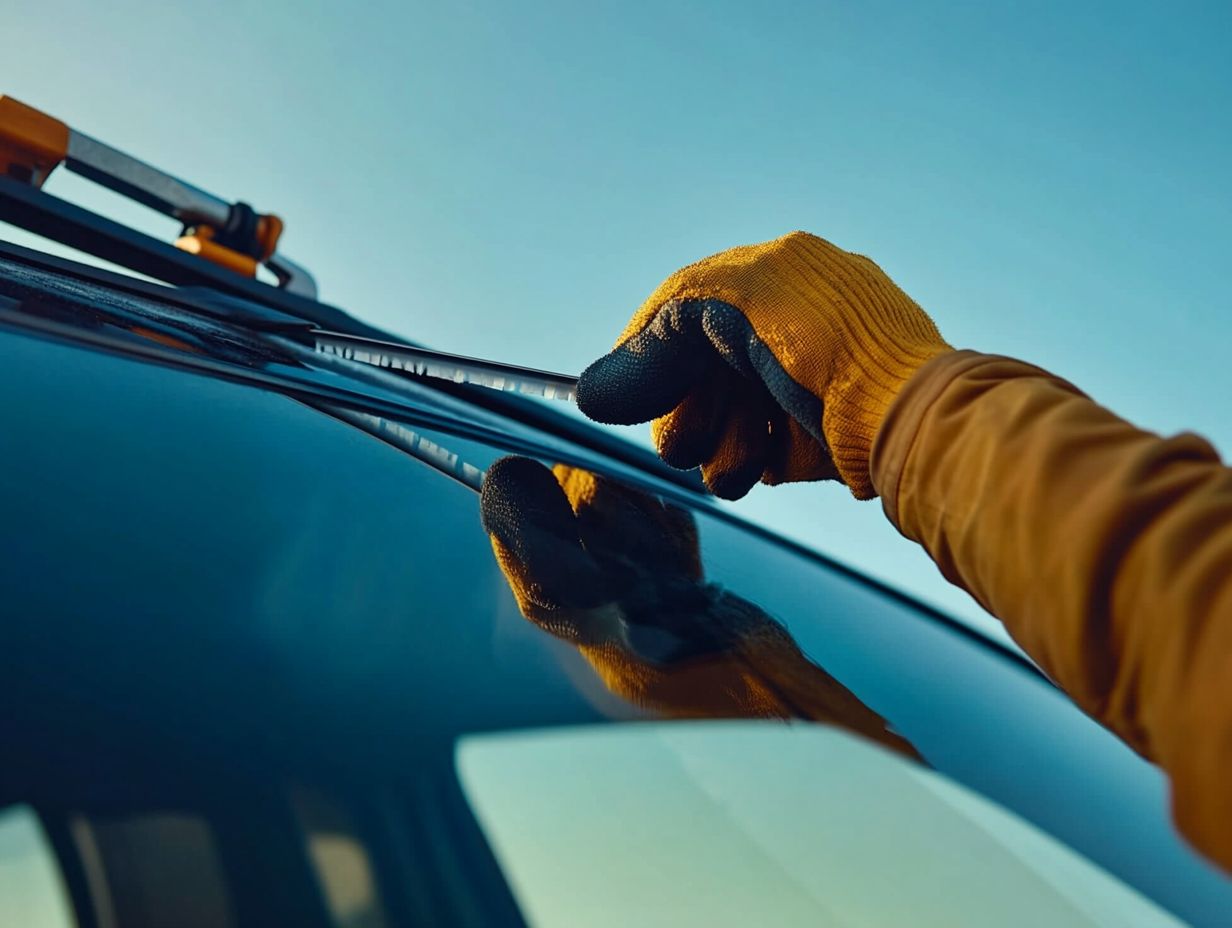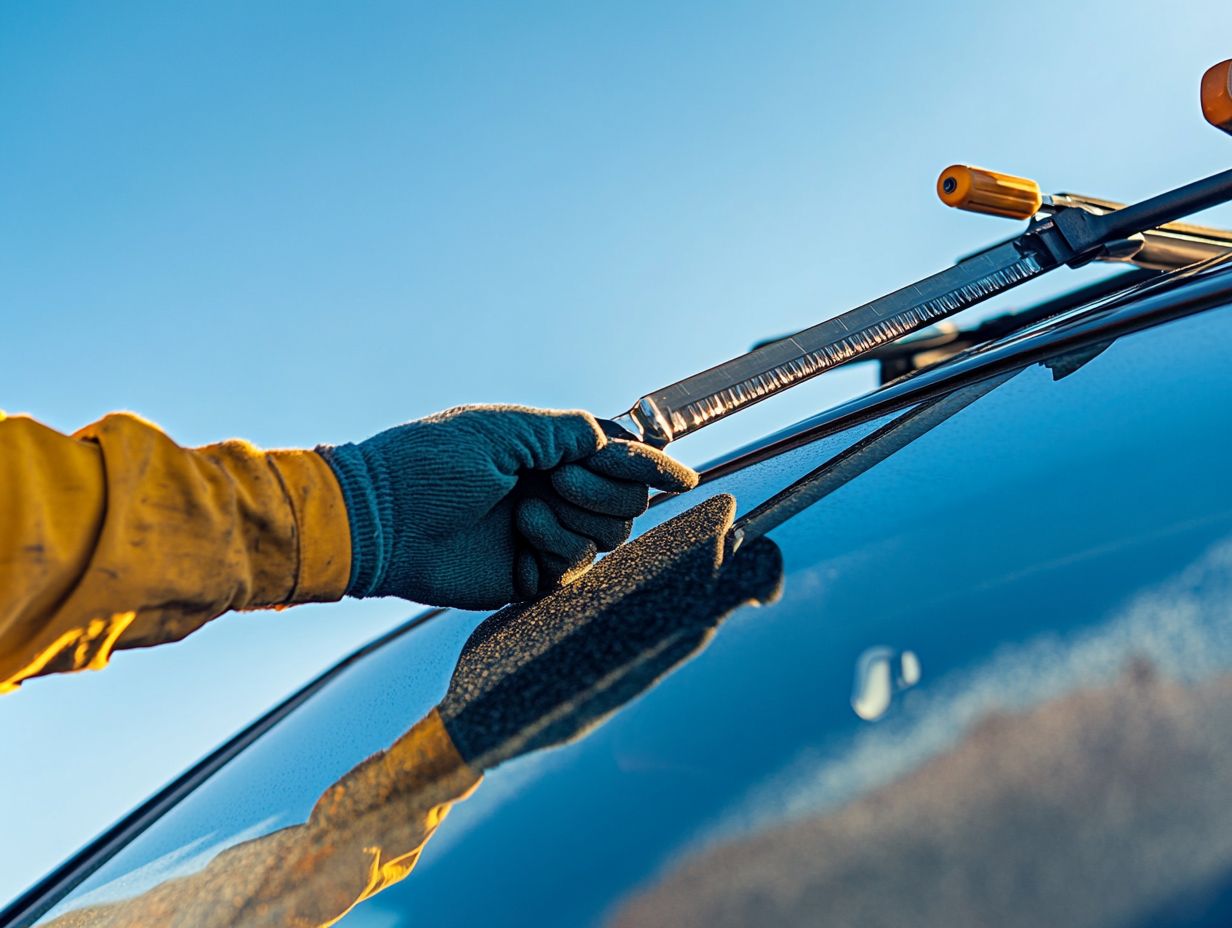How to Check and Replace Wiper Blades
Wiper blades might appear to be a minor detail, yet they are vital for your safety on the road, particularly in challenging weather conditions.
By regularly checking and replacing these essential parts, you can significantly enhance your visibility and prevent potential accidents. This article delves into the importance of wiper blades, guides you on how to recognize when they need replacing, and provides straightforward steps for changing them out.
You ll also discover maintenance tips to keep your wiper blades in peak condition for safe driving throughout the year.
Contents
Key Takeaways:

- Regularly checking and replacing wiper blades is crucial for safe driving.
- Signs such as streaking or skipping indicate that wiper blades need to be replaced.
- Proper maintenance, including cleaning and storage, can extend the lifespan of wiper blades and ensure optimal performance.
Why Checking and Replacing Wiper Blades is Important
Checking and replacing your wiper blades is vital for maintaining clear visibility and ensuring your safety on the road. Knowing when to replace your windshield wipers can help you avoid having old, worn-out blades that lose their effectiveness, significantly impacting performance in challenging weather conditions.
By conducting regular inspections and replacing them when necessary, you can prevent potential automotive issues. This is a crucial part of your car maintenance routine. Industry experts like Hovig Manouchekian from Funk Brothers Auto emphasize that neglecting this essential task can put both drivers and passengers at risk particularly during rain or snow, when having a clear view is absolutely paramount for safe driving.
The Role of Wiper Blades in Safe Driving
Wiper blades are essential for ensuring your safety on the road. They maintain optimal visibility during rain and adverse weather conditions and help prevent accidents caused by obscured views. When your windshield wipers are functioning properly, they provide clarity, allowing you to react swiftly to changing road conditions and potential hazards.
Statistics show that nearly 30% of accidents in rainy weather can be traced back to poor visibility, underscoring the critical importance of keeping your wiper blades in peak condition. These parts are designed to clear away rain, snow, and debris, significantly enhancing your field of vision and reducing the risk of accidents. Regular maintenance and timely replacement of wiper blades can be pivotal; neglecting this vital aspect of vehicle upkeep could leave you vulnerable in dangerous situations.
By investing in high-quality wiper blades and checking them regularly, you can significantly boost your chances of safe navigation through less-than-ideal weather.
Signs that Wiper Blades Need to be Replaced
Recognizing the signs that your wiper blades need replacement is crucial for maintaining visibility in rainy conditions and ensuring a safe driving experience. Look for common indicators like streaking, skipping, or unusual noises during operation these suggest that the rubber wiper material has seen better days.
Ignoring worn-out wiper blades can lead to inadequate performance, ultimately jeopardizing your safety on the road. It s essential for you to conduct regular visual inspections to spot these issues early and keep your drive secure.
Visual Inspection and Common Indicators

Performing a visual inspection on your wiper blades is essential. Check for signs like cracks, stiffness, and wear on the rubber these are clear signs that it s time for a replacement. Don t overlook those maintenance tips, such as checking the wiper blade length and ensuring compatibility with your vehicle’s make. Ignoring these details can lead to ineffective replacements.
You might notice frequent signs of trouble, like streaking on the windshield, chattering sounds during operation, or a skipping motion that fails to clear rain effectively. These aren t just minor annoyances; they can severely impair visibility, especially in bad weather.
It s crucial to choose wiper blades that fit your specific make and model for optimal performance. Regular maintenance checks not only enhance your safety but also extend the lifespan of your wipers. Timely replacements become a key part of your vehicle’s upkeep, ensuring you stay safe on the road.
Steps for Replacing Wiper Blades
Replacing wiper blades is a simple yet essential task. It significantly improves your vehicle’s visibility and safety on the road. You can typically complete it in just a few straightforward steps.
- Start by gathering the necessary tools and materials, which will likely include new wiper blades and a measuring tool to determine the correct size.
- Next, remove the old blades and install the new ones. Follow the installation instructions carefully to ensure optimal performance.
Gathering Necessary Tools and Materials
Before beginning the replacement process, gather all the necessary tools and materials. This includes the correct size of wiper blades, which you can conveniently find at your local auto parts store. It’s also important to have any tools needed for proper installation.
Measuring the wiper blade length accurately is key to a successful installation! Remove the existing blade and use a ruler or tape measure to note its size from tip to tip. Remember, wiper sizes can vary significantly based on your vehicle’s make and model.
Verify compatibility, as different vehicles may require specific blade types or attachment styles. Using the wrong blades can lead to poor wiping performance and might damage your windshield. Ensuring the right fit will enhance your visibility in bad weather, contributing to safer driving conditions.
Removing Old Blades and Installing New Ones
To replace your wiper blades, start by removing the old ones. Lift the wiper arm gently away from the windshield and press the release tab to detach the old blade.
Once that’s done, it’s time to install the new blade. Align it carefully with the wiper arm for a snug and secure fit.
Inspect how the wiper blade connects to the wiper arm this is essential since different wiper blades use various fitting styles like hook-mount, clip-on, or pin-mount. After confirming you’ve selected the right new blades, align them with the connection point on the wiper arm. Push firmly until you hear a satisfying click, which means the new blade is locked in place.
Now, gently lower the wiper arm back onto the windshield. This ensures it rests correctly and operates smoothly. Regular maintenance of your wiper blades will significantly enhance visibility during inclement weather, keeping you safe on the road.
Tips for Maintaining Wiper Blades

Proper maintenance of your wiper blades is crucial for extending their lifespan and guaranteeing optimal visibility in bad weather. Regularly cleaning the rubber wipers and inspecting them for signs of wear helps maintain their performance.
Follow the correct installation process during replacements to ensure they work effectively. This will provide you with the clarity you need when driving in the rain.
Proper Cleaning and Storage Techniques
Proper cleaning and storage techniques for your wiper blades can significantly extend their lifespan and maintain their cleaning efficiency. By routinely wiping the rubber wiper with a damp cloth, you can effectively remove dirt and debris. Store the wipers in a cool, dry location to prevent deterioration.
In addition to regular cleaning, using a mild soap solution can help remove stubborn grime, ensuring optimal visibility during inclement weather. While cleaning, inspect the blades for any signs of wear or damage; this allows you to replace them promptly if necessary.
When your wipers are not in use, protect them from extreme temperatures and sunlight to prevent cracking and brittleness. By taking these proactive measures, you can boost the performance of your wiper blades and significantly improve overall safety while driving. Clean, well-maintained wipers provide clearer visibility.
Don’t wait until the rain starts check your wiper blades today!
Importance of Regularly Checking and Replacing Wiper Blades
Checking and replacing your wiper blades regularly is vital. It helps maintain safety and ensures clear visibility in the rain.
This simple practice can make sure your wiper system, the system that helps clear your windshield, works well.
Ignoring this can reduce performance in bad weather, especially when you need it most. Experts recommend you check your wiper blades once a month and replace them every six to twelve months, depending on your climate and how often you drive.
If you frequently navigate through heavy rain or snow, you will need to check and replace them more often to avoid the risks associated with impaired visibility.
Taking a few minutes to maintain your wipers can greatly improve your safety on the road!
Watch this helpful video on how to maintain your wiper blades.
Frequently Asked Questions
1. How do I know when it’s time to replace my wiper blades?

Signs that it’s time to replace your wiper blades include streaking, skipping, or smearing on your windshield, or if you notice any visible damage such as cracks or tears on the rubber blade.
2. How often should I check and replace my wiper blades?
It’s recommended to check your wiper blades every six months and replace them at least once a year, or more frequently if you live in an area with harsh weather conditions.
3. What tools do I need to replace my wiper blades?
All you need is a replacement set of wiper blades and possibly a small screwdriver or pliers to help with the installation.
4. How do I check the condition of my wiper blades?
Inspect the rubber blade for any cracks, tears, or signs of wear and tear. You can also run your finger along the edge of the blade to feel for any rough or uneven spots.
5. How do I replace my wiper blades?
First, lift the wiper arm away from the windshield and locate the release tab or button on the wiper blade. Press or slide the tab to release the blade from the arm. Then, attach the new blade by following the manufacturer’s instructions, and snap it onto the wiper arm. Repeat for the other wiper blade.
6. Can I replace just one wiper blade?
It’s recommended to replace both wiper blades at the same time to ensure even pressure and performance. However, if only one blade is damaged, you can replace just that one. Just make sure to check the other blade for any signs of wear and replace it if necessary.
Don’t wait until it’s too late check your wiper blades today!





